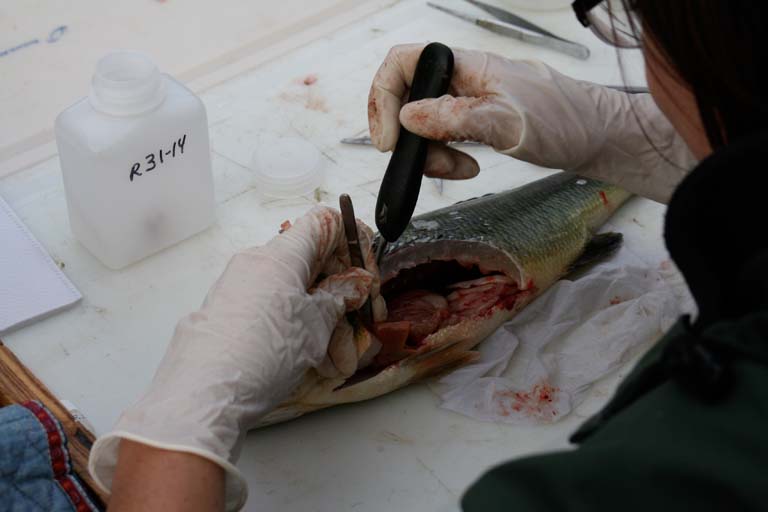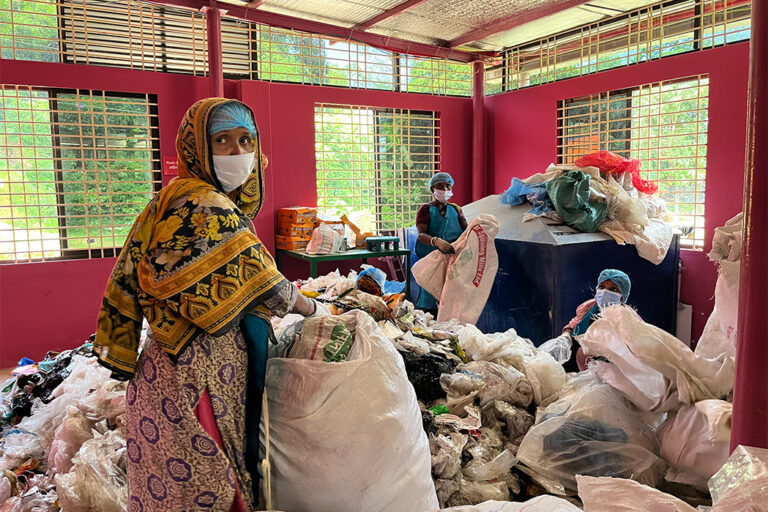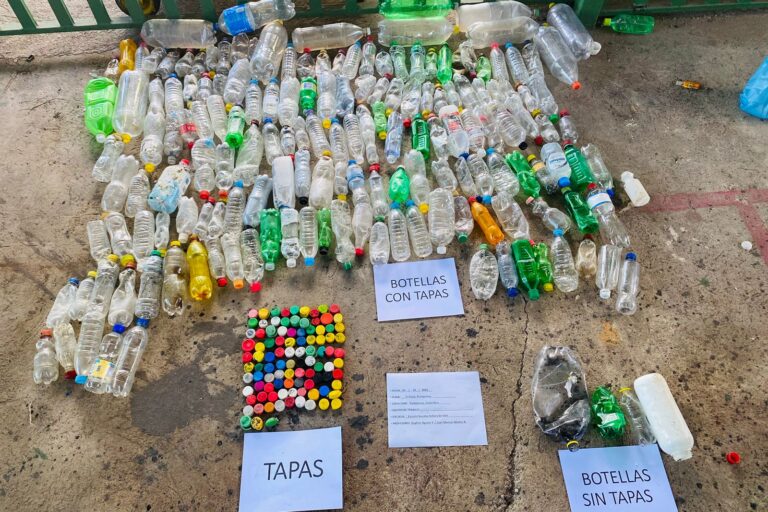- A new study published in Ecotoxicology and Environmental Safety finds that male fish are turning into females – a phenomenon known as intersex – due to chemical pollution, specifically estrogenic endocrine disrupting chemicals or EEDCs.
- Researchers have found evidence of intersex in 85 percent of smallmouth bass and 27 percent of largemouth bass tested on 19 National Wildlife Refuges from Maine to Virginia.
- The varied and numerous sources of EEDCs make them difficult to track. Single-point sources, such as large buildings with obvious effluent pipes like waste water treatment plants and paper pulp mills, are of major concern.
Sex is getting complicated. Especially fish sex in New England. Scientists have recently discovered that fish in the northeastern U.S. are changing gender – and it’s not due to an identity crisis. A new study published in Ecotoxicology and Environmental Safety finds that male fish are turning into females – a phenomenon known as intersex – due to chemical pollution, specifically estrogenic endocrine disrupting chemicals or EEDCs. Researchers have found evidence of intersex in 85 percent of smallmouth bass (Micropterus dolomieu) and 27 percent of largemouth bass (Micropterus salmoides) tested on 19 National Wildlife Refuges from Maine to Virginia.
“It’s hard not to make the leap to ask if fish are effected, then are amphibians, birds, wildlife, and then are humans?” noted Luke Iwanowicz, lead scientist with U.S. Geological Survey (USGS), on the study.
Iwanowicz first discovered examples of intersex in smallmouth bass in the south branch of the Potomac River while conducting research on another topic nearly 10 years ago. At the time, he’d only known about the phenomenon from research that had been conducted by scientists in Europe.
“If we hadn’t stumbled upon this intersex no one would really be looking for it,” said Iwanowicz. Until this study, the prevalence and severity of intersex occurring in fish throughout the northeast region of the U.S. remained largely unknown even though EEDCs have been a global environmental problem for over thirty years.
EEDCs originate from a number of sources, from naturally occurring estrogens such as the hormone-like phytoestrogens found in soy plants and soy-derived products to synthetic pharmaceuticals such as some birth control pills, Bisphenol A (BPA) used in some plastic products, natural sex hormones in livestock manures, and agrochemicals such as pesticides, and herbicides.

At certain concentrations, estrogen, the primary female sex hormone, is capable of derailing the natural hormone system of fish, wildlife, and humans. This is a concern surrounding both natural and synthetic sources alike. It can cause reduced sperm count and viability, reproductive failure, and population decline.
Dramatizing this, Karen Kidd, a biologist with the Canadian Rivers Institute at the University of New Brunswick, doused a pond with high concentrations of synthetic estrogen in 2007. The result: fish populations crashed. Kidd’s study was an extreme case, says Iwanowicz, “but it’s proof that this stuff can have dramatic effects.” Intersex, which shows no outward physical signs, is just a precursor to these more detrimental outcomes and potential population crashes.
Over three years, U.S. Geological Survey and U.S. Fish and Wildlife Service researchers worked together to determine the extent and severity of hormone disruption in and around 19 National Wildlife Refuges in New England. They caught and processed 118 smallmouth bass and 173 largemouth bass, all males. Small and largemouth bass were chosen because they serve as the ‘canaries in the coal mine’ for aquatic environments, showing evidence of the effects of estrogen chemical pollution before other species might.
Researchers from USFWS and USGS began field work in late August in Maine and followed the season south to Virginia in November. USFWS crews caught small and large mouth bass and brought them to USGS field crews at stations along the banks of the water. Crews then euthanized the fish and took measurements and samples for further processing in the lab. These measurements allowed researchers to determine that intersex observations were not tied to normal fish biology.
One goal of the study was to compare locations both inside protected areas and outside.
“I had the idea that refuges were in remote areas, heavily wooded, and non-utilized” said Iwanowicz who works for USGS. Instead, he found that while some of the refuges are in remote locations accessible by rough dirt roads, others were in urban areas, one even under the flightpath of international airports. At many of these sites, fish were infested with internal parasites carried in by migratory birds, further dispelling Iwanowicz’s perception that refuges are pristine environments.
“I didn’t expect to see the prevalence as high as it was in many of these [protected] locations,” said Iwanowicz. The team found that intersex was a common occurrence in the 19 refuges studied with 85 percent of smallmouth and 27 percent of largemouth bass having female egg cells in their testis.
Researchers also found that EEDCs were present in all types of water bodies sampled — rivers, reservoirs, lakes, ponds, and effluent.

The varied and numerous sources of EEDCs make them difficult to track. Single-point sources, such as large buildings with obvious effluent pipes like waste water treatment plants and paper pulp mills, are of major concern. For example, one active ingredient in birth control pills, a very potent estrogen, is known to pass right through waste water treatment plants.
“When that is the case, there are some pretty profound effects,” said Iwanowicz.
But non-point sources are also a concern, these include agriculture or sewer overflow from cities. For example, natural and synthetic hormones present in manures and herbicides that farmers apply to crops in the spring, pulse off the landscape with spring rains and snow melt, potentially leaching EEDCs into the water table.
Scientists made note of both point-sources and non-point sources along the rivers, lakes, ponds, and reservoirs that served as study sites. But researchers never identified a single source of estrogen pollution. In some study areas agriculture use was high, others were more urban, and many sites had a combination of both.
“It was beyond the scope of this work to do chemical analysis and try to point a finger at a particular source,” explained Iwanowicz, though he hopes follow up studies will allow for that.

The study also suggests that smallmouth bass living in the northeastern U.S. have a greater likelihood of developing intersex than those in other regions.
“It is possible that this reflects differences in sources and chemical mixtures present in the environment that lead to a higher risk exposure,” the researchers noted in the paper.
Currently, fish populations are not showing outward signs of decline that can be tied directly to EEDCs. And this is what worries Iwanowicz.
As is the case with the global decline in honeybee and amphibian populations, “It’s so hard to find a specific cause, probably because there isn’t one. There’s this additive effect of lots of different things,” said Iwanowicz.
In addition to disrupting their hormone system, estrogen chemicals have subtle effects on fish’s immune systems. “An underlying concern [with these fish] is that if there are drastic changes in the environment, as we are seeing with climate change, maybe the balance would be tipped,” said Iwanowicz. The layered impacts of hormone disruption, weakened immune systems, and environmental change could result in the population suddenly crashing.
For this reason, Iwanowicz concludes that continued long-term monitoring of the situation is essential. His top priority is to determine the specific chemicals present in the water and the time of year they are present in the National Wildlife Refuges where the initial study found significant prevalence of endocrine disruption in bass. This information could help inform water quality management practices, such as changing the time of year farmers spread manure on crops so chemicals don’t end up in the water.
He says, “The bottom line is clearly there are chemicals getting in the water that are leading to these changes. Our thinking needs focus on how to keep them out of the water.”
CITATION: Iwanowicz, L. R., Blazer, V. S., Pinkney, A. E., Guy, C. P., Major, A. M., Munney, K., … & Kubiak, T. J. (2016). Evidence of estrogenic endocrine disruption in smallmouth and largemouth bass inhabiting Northeast US national wildlife refuge waters: A reconnaissance study. Ecotoxicology and environmental safety, 124, 50-59.













